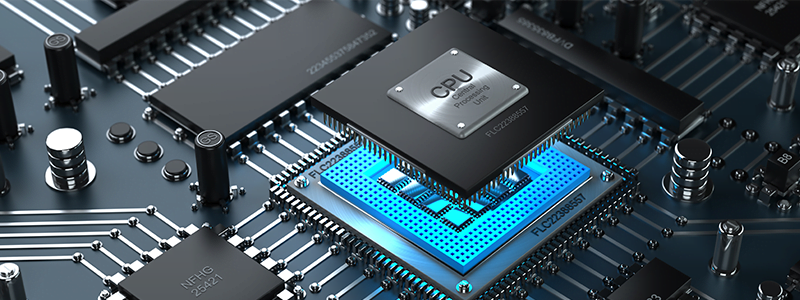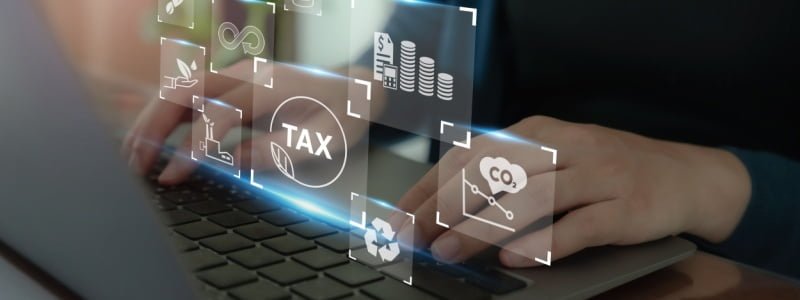The global computer hardware market is expected to be worth about US$1.2 trillion by 2025. But what type of hardware innovation will we see in the future? And how could R&D be involved in turning it into a more significant part of the Australian economy?
Some Australian businesses are looking at IT hardware research and development as an opportunity. Over the coming years, the IT hardware market is expected to be aided by rapid global growth in investments in smart city projects in many countries. Smart city technologies use computers and related hardware together with information and communication technologies to efficiently manage and operate urban services including lighting, parking, transportation systems, garbage collection, water supply, air pollution management, and law and order. These technologies are enabled through technology for the Internet of Things (IoT), which is a convergence of computing devices and mechanical and digital objects.
An example of the financial backing for these technologies was the 2018 investment of €250 million by the Dutch pension group APG in a “Smart City Infrastructure Fund”, for development of smart city projects across North America, Europe, Australia and other major urban areas in the world.
Besides the global computer hardware market being expected to reach about US$ 1.2 trillion in value by 2025, revenue generated by Artificial Intelligence (AI) hardware, software and services was estimated to be around US$150 billion worldwide by 2020. Australia’s high labour costs makes cost competitiveness for the manufacturing of certain labour-intensive IT hardware extremely difficult to achieve. For example, Leader Computers Pty Ltd, based in South Australian, is the largest PC manufacturer in the country, but their business is more the assembling of various individual components manufactured overseas to make a final computer hardware product. Nevertheless, the emergence and evolution of IT hardware niches, such as networking hardware and AI hardware, could show the pathway to follow for Australian IT hardware R&D, particularly if these niche areas involve robotics and automated machinery in the production processes. Some of these areas are a somewhat unknown quantity at the minute but have a potentially huge upside.
The 2018 report “Artificial-intelligence hardware: New opportunities for semiconductor companies” highlights that, although the innovations by semiconductor companies in chip design and fabrication over recent decades enabled next-generation devices for PCs and mobile phones, these companies received only a small share of the value coming from the technology stack—about 20 to 30% with PCs and 10 to 20% with mobile phones. But moving forward, the trajectory of semiconductor companies could be very different with the growth of AI, because AI applications share one common feature: a reliance on hardware as a core enabler of innovation, especially for logic and memory functions.
One example of a development in this area is at the Royal Melbourne Institute of Technology (RMIT) IT hardware research and development. At RMIT researchers have developed artificial intelligence technology that brings together imaging, processing, machine learning and memory in one electronic chip, powered by light. The prototype shrinks AI technology by imitating the way that the human brain processes visual information, and aims to integrate electronic hardware and intelligence together, for fast on-site decisions. The nanoscale advance combines the core software needed to drive AI, together with image-capturing hardware in a single electronic device. Professor Sumeet Walia — one of the project’s lead researchers — explained one potential use for this breakthrough technology: “Imagine a dash cam in a car that’s integrated with such neuro-inspired hardware – it can recognise lights, signs, objects and make instant decisions, without having to connect to the internet.”
In relation to networking hardware, concerns about the closeness of Chinese companies to the interests of the Chinese government and, therefore, the potential for espionage, were behind the decision by several countries (including the United States, Australia, and the United Kingdom) to restrict or eliminate the use of Chinese hardware and other equipment in their respective 5G networks. This geopolitical situation, together with the various fiscal incentives for R&D and manufacturing, certainly seem to be a strong impetus for IT hardware R&D and innovation in Australia. So, let’s take a closer look at some of these incentives and how they can benefit IT hardware R&D.
R&D Tax Incentive (RDTI)
The federal government’s R&D Tax Incentive (RDTI) is a long running program that provides reliable R&D funding and is available to most companies, as long as certain requirements are met — in particular, that the R&D involves experimental activities, whose outcome can only be determined by applying a systematic progression of work that proceeds from a hypothesis to experiment, observations and evaluations, and leads to logical conclusions. The purpose of the R&D must be to generate new knowledge.
Startup companies in this area will be pleased to know that the RDTI is especially attractive for them, because the value of the refundable R&D Tax Offset is 43.5% of your eligible expenditure, which allows companies to cash out their available tax losses and receive a refund to use as they see fit.
Modern Manufacturing Initiative (MMI)
This $1.3 billion initiative seeks to address the federal government’s National Manufacturing Priorities, three of which could have significant crossover into the IT hardware realm: Space, Medical Products, and Defence.
There will be various rounds of funding, and available information states that MMI funding of $1m to $20m will be provided on a co-investment basis, covering up to 50% of project costs. This means the smallest eligible project would have $2m eligible expenditure.
The MMI will initially provide co-funding for manufacturing projects across the following 2 of the 3 targeted manufacturing streams:
Manufacturing translation stream, which will help Australian manufacturers translate high quality research and ideas into commercial outcomes; and
Manufacturing integration stream, which will help Australian manufacturers access domestic and global supply chains and produce and distribute quality products and high value services into them.
At both the state and federal level, there are many other grants and incentives that could potentially benefit businesses doing IT hardware research and development, some of which appear periodically and only for a short time, and often targeted more at businesses that have a “ready-to-go” project just waiting for funding. And there are other grants and incentives that are targeted more at businesses with an MVP (for example the NSW state government MVP grant), but who are looking at scaling up and commercialising their innovations (for example the Accelerating Commercialisation grant).
If you’re involved with IT Hardware research and development, you know you need the best advice to keep moving onward and upward. So reach out to today to Fullstack and discover how our knowledge and expertise will keep you on the right path and ensure you receive all the grants, incentives, and rebates you’re entitled to.
Was this article helpful?
Related Posts
- Software Development and Research: Tax Incentives
The current audit attention to software R&D tax incentives may affect your cash flow. In…
- Getting ready for Single Touch Payroll
Single Touch Payroll is the ATO’s new initiative to streamline reporting on wages and super.…
- Getting started with Xero Accounting
Thinking of using Xero as your accounting software? We will run over the basic functions…
- Best Crypto Hardware Wallet: Ledger or Trezor?
Keeping your crypto safe in storage is just as important as making a profit. Wallets…
















